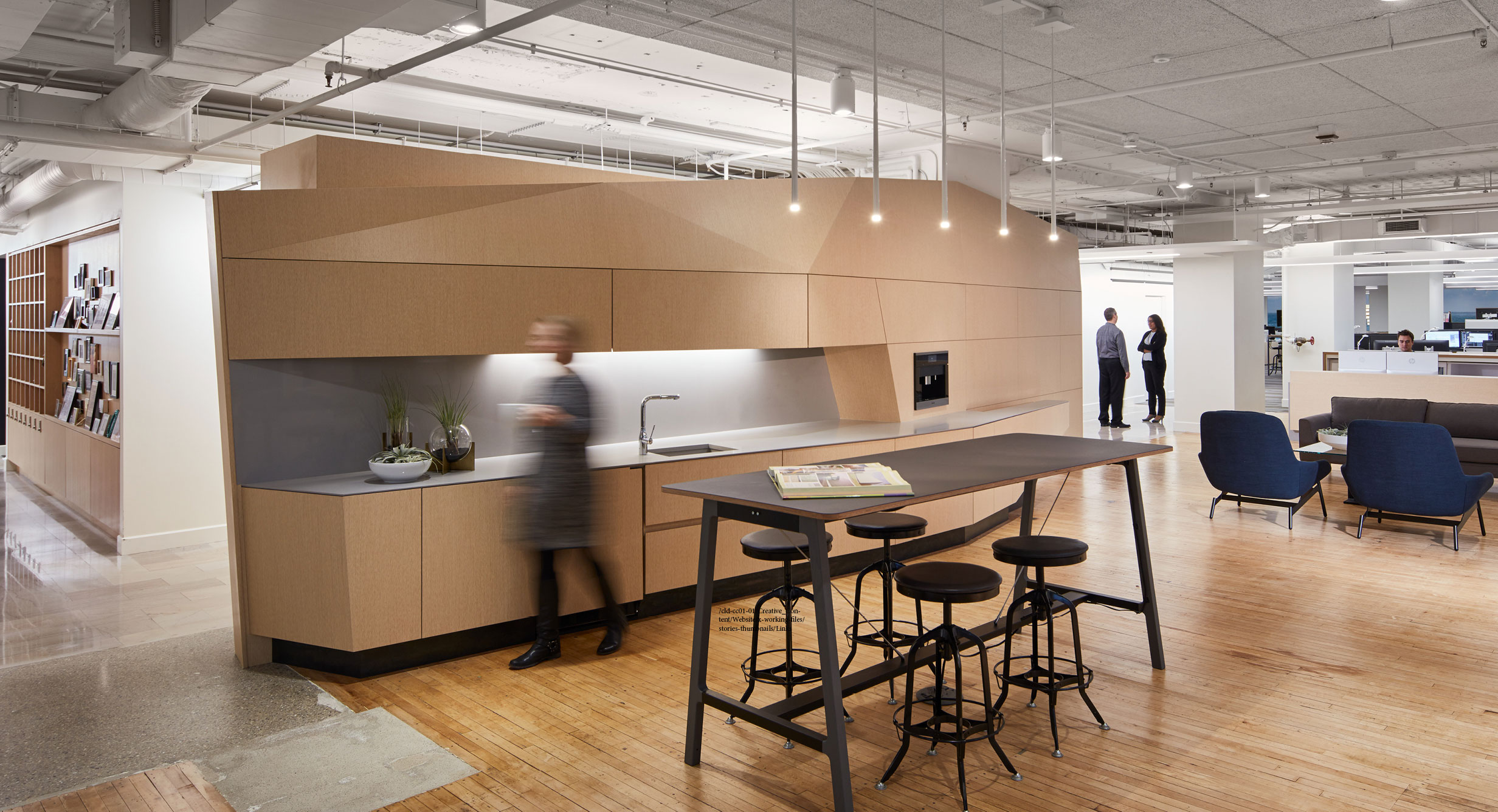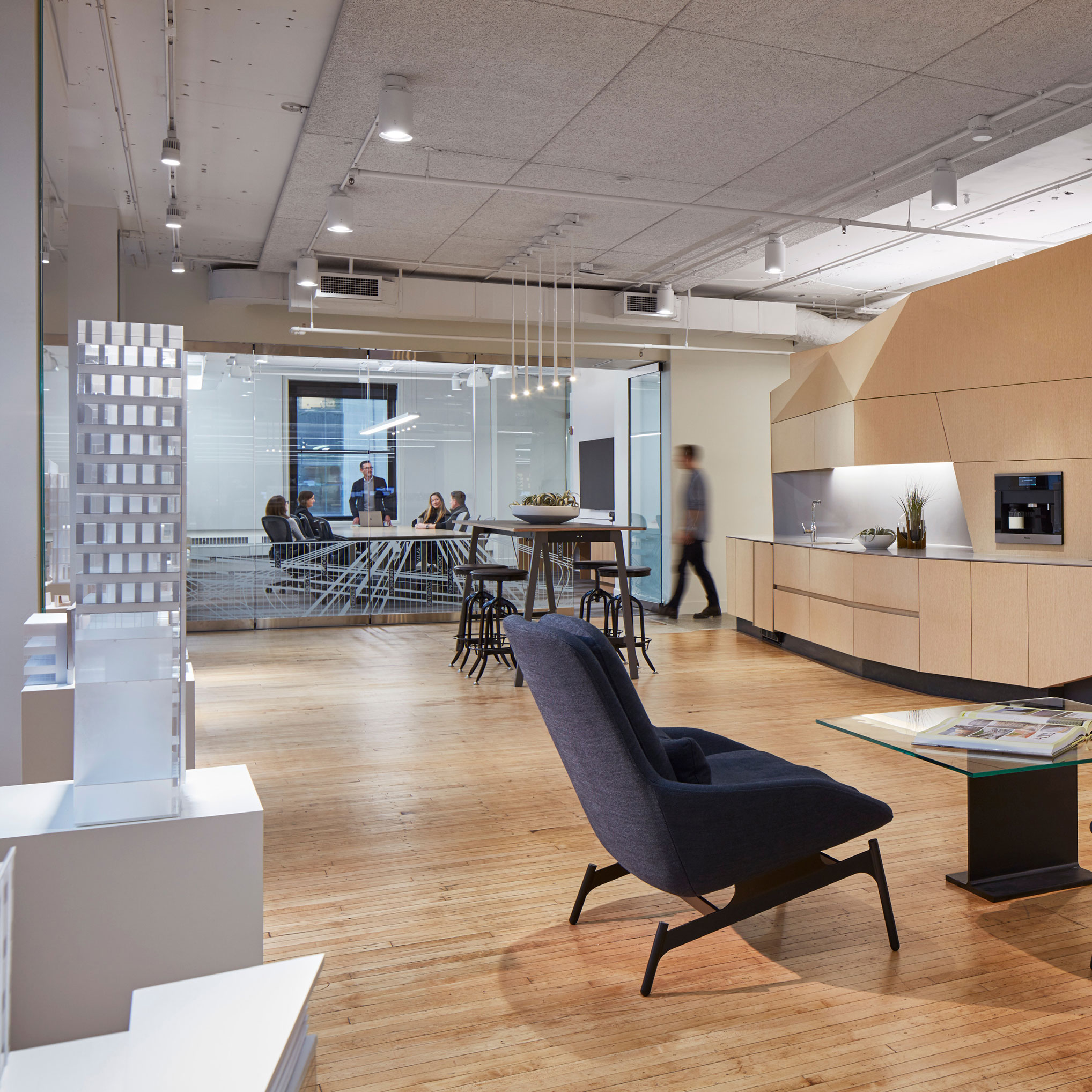
100+ at HKS Earn WELL AP Accreditation
At the beginning of 2017, HKS and Delos formed a strategic partnership to study the impact of the built environment on human health and well-being. In tandem with this research, HKS set a goal for its staff: we challenged our designers to become WELL Accredited Professionals (APs), and set a goal for our team to reach 100 WELL APs by the end of 2017. In this story, Rand Ekman, chief sustainability officer, discusses the journey and its significance for HKS and its clients.
What is the WELL standard, and what makes it valuable to clients and users?
The WELL standard evaluates the various ways the built environment affects people. It’s based on seven years of research and development by scientists and medical professionals. It seeks to inform how we can use the built environment to boost public health. It’s a different twist on sustainability.
For example, the LEED rating system assesses how much water a building uses, whereas WELL evaluates the quality of water people can drink within a building. With lighting, WELL evaluates the quality of light, determining whether designers are allocating the proper amount of light to support people’s circadian rhythms, rather than lighting power density. This kind of thinking helps clients provide spaces that better support health, improving people’s performance.
Where did the goal for 100 WELL APs come from?
We entered into an agreement with Delos, the organization which developed WELL, and one part of that agreement entailed increasing our number of WELL APs. It was a point of synergy, so we didn’t complain when they said they wanted 50 WELL APs by the end of 2017. But when Kirk Teske, HKS’ first chief sustainability officer, saw 50, he said it was too low, declaring: “HKS can do better than that.” I’ve been really proud to see how many have validated his faith in HKS.
How does HKS benefit from designers becoming WELL APs?
WELL was released in the fall of 2014 and it’s still very much in development. At the end of 2017, there were fewer than 50 WELL certified projects worldwide. Our partnership with Delos and our commitment to the WELL standard is about being in the vanguard. HKS is committed to design that improves health, and WELL is one tool that can focus our efforts.
Because most clients aren’t yet aware of WELL certification, or the benefits that it offers them, it doesn’t typically come up on a project unless a team member raises it. Our intent is to build awareness of how the built environment can improve health and well-being, and our new army of WELL APs, distributed throughout the firm, will help us do that.
You said that WELL is still in development. In what way?
While a few sectors are testing pilots, only the Commercial Standard is finalized. HKS is one of several organizations partnering with Delos and the International Well Building Institute to help develop standards for other sectors. Most recently, we co-authored a pilot for the WELL Community Standard, which offers a blueprint for integrating well-being design across neighborhoods, districts and even cities. The way we gain access to the development of these standards is by pursuing relevant work. The more sectors that pursue well-being-focused design, the greater the opportunities we have.
What else is in HKS’ partnership with Delos?
There are three key pillars in our partnership with Delos, and the first is education. Delos and I partnered to offer HKS designers three workshops on design for well-being in 2017, which is one of the reasons we could achieve our goal of reaching 100+ WELL APs. Project partnerships are the second pillar. Delos can help us as a project consultant, navigating some of the standards’ challenges. The third pillar is research. Like HKS, Delos is committed to expanding upon existing research focused on how the built environment impacts health and well-being. In 2017, HKS became a founding partner of the WELL Living Lab in Rochester, Minnesota. The WELL Living Lab is part of the Mayo clinic, a globally-recognized innovator in health research.
How are we making this a part of HKS’ culture?
In part, we’re expanding the research into our own offices. We’ve been testing WELL design principles on ourselves by designing several of our offices to achieve WELL certification. The first three will be in London, Chicago and Miami, where we will do longitudinal field research. This is obviously a benefit to both Delos and HKS, as all good partnerships are. We’re both able to understand how WELL design aspects interact when applied in aggregate, all while observing user responses.
How are the WELL standards connected across sectors?
Because the health conditions that we address stay the same, regardless of what type of building a person is in, each standard shares the same DNA. When we’re addressing different sectors, it’s about adding nuance to what’s already been drafted. We tailor the standard to different types of environments, whether it be an airport, a hotel or a stadium. The goal is to provide the same health and well-being outcomes wherever people are.
How does WELL improve the work we do for health care clients and patients?
When we design health care environments, it’s not just about creating a space for the equipment and a space for the patient, and it’s not just about the distance from a patient to the nurses’ station. It’s about how design itself can be an unseen practitioner.
Take lighting, where the color rendering index explains how lights render color. That’s important to a designer who considers how a material’s finishes will appear to the human eye, yet there’s a whole other dimension when we design health care spaces. Health care practitioners must be able to see whether a patient is pale, flushed, jaundiced or any number of other things. It’s hard to overstate the importance of being able to render colors accurately in health care environments.
Now that we have 100+ WELL APs in the firm, how will it impact HKS’ work?
In 2018, we want to see HKS pursue a WELL certified project in every sector, in every region. Now that more of our designers have achieved WELL accreditation, it’s important that they have the opportunity to put their new knowledge to use. Regardless of whether our clients opt to pursue WELL certification, our WELL APs should implement what they’ve learned. So much of the logic that underpins the WELL Standard is just smart, good design. Ultimately, designing for well-being is about being an excellent designer and using every tool at your disposal.

